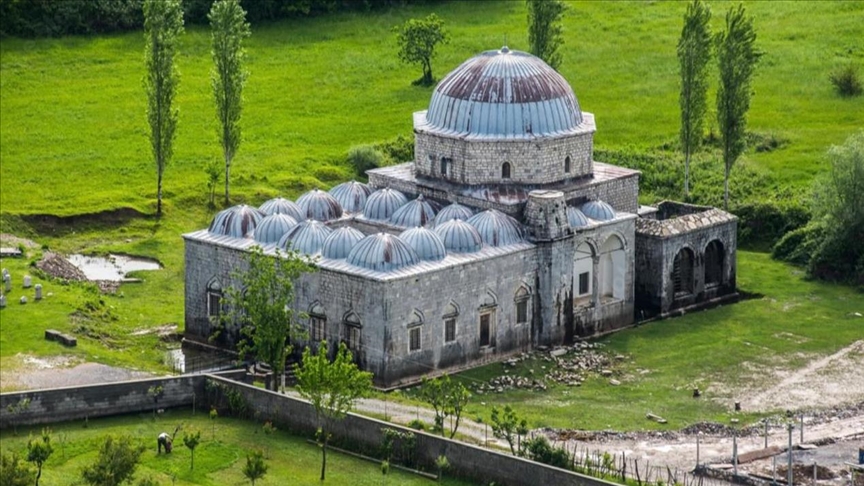In Shkodra, in northwestern of Albania, is located a historical mosque named “Lead Mosque” (in Albanian: Xhamia e Plumbit). All of its cupolas were covered with lead; this is why it took the name Lead Mosque. It was built in 1773 by the Albanian pasha Mehmed Bushati of the noble Bushati family, who was vizier of Pashalik of Scutari at the time. Mehmed Bushati was personally involved with the construction and stones were incised under his patronage. Haxhi Ahmet Misria was the first Imam of this mosque and he was of Egyptian origin coming to Albania after the contacts he had with Mehmed Bushati.
The architectural style of this Mosque is of Ottoman architecture and style and was built with hewn stones of almost the same size, which creates pleasant construction symmetry. Stones were brought from the nearby village of Gur i Zi by people who aligned to each other over kilometers passing the stones to reach the construction point. The Lead Mosque, which recognizes as its construction year in 1773. This is also confirmed by the engraving of the inscribed carved on the plaque located on the main door of this mosque, which states: “Year 1187 AH is the date of construction of the great mosque of Mehmet Pasha, god of charities.” And below: “Year 1280 is the repair date of the mosque by its guardian Mahmut Berberi.” Namely, these two dates of the Islamic calendar coincide with the years 1773 and 1863.
During the communist regime, after the leader Enver Hoxha declared Albania as an atheist state the Lead Mosque was closed down, the same as the other religious institutions (year 1967). It survived from the communist regime, unlike many mosques that were destroyed during this time, probably because it was declared a Cultural Monument in 1948.

